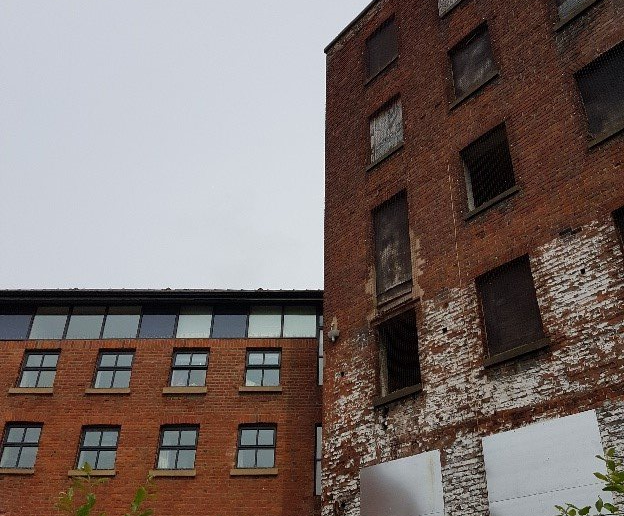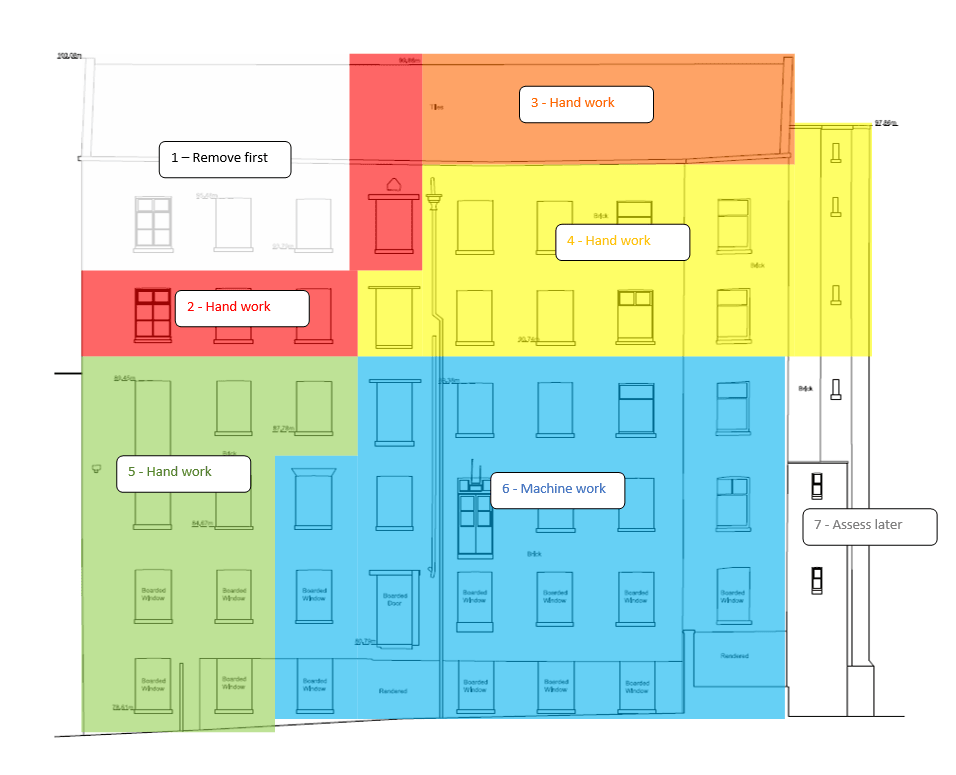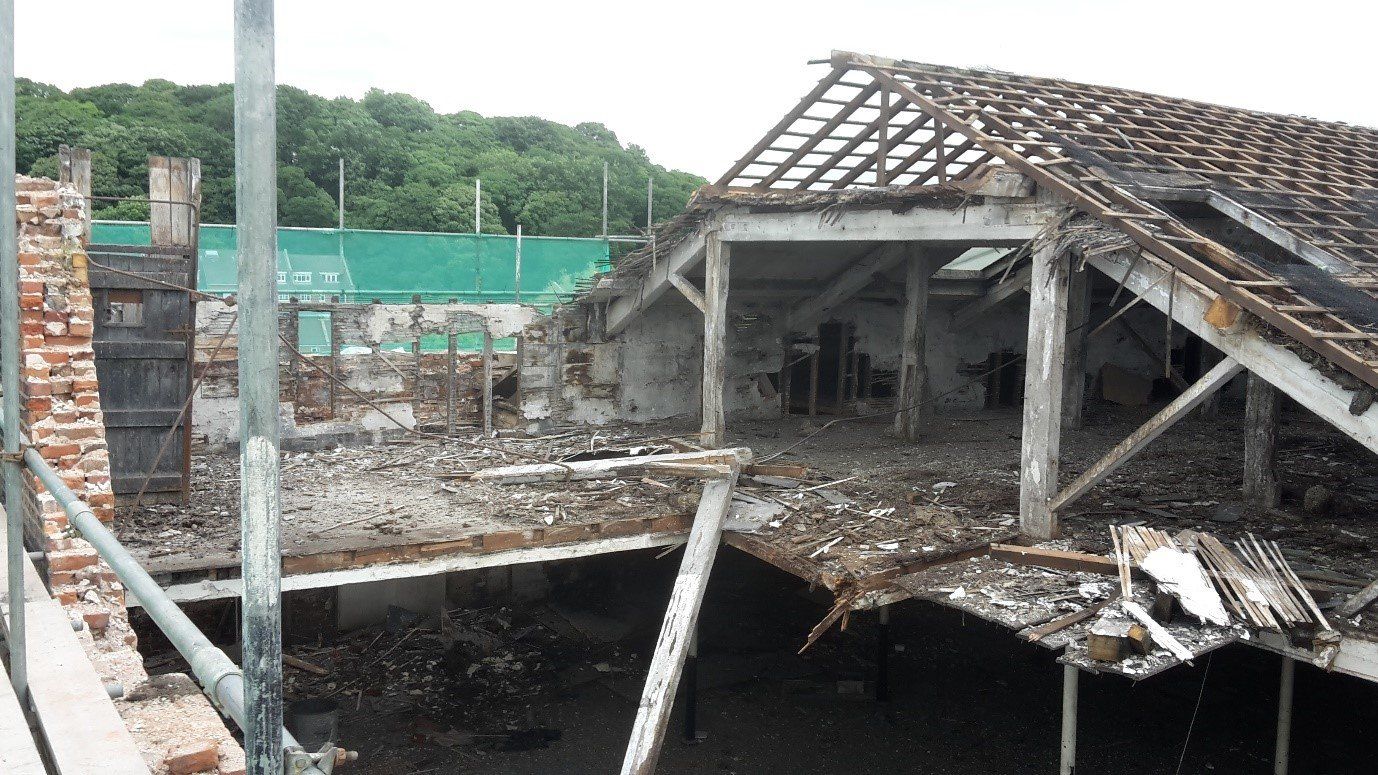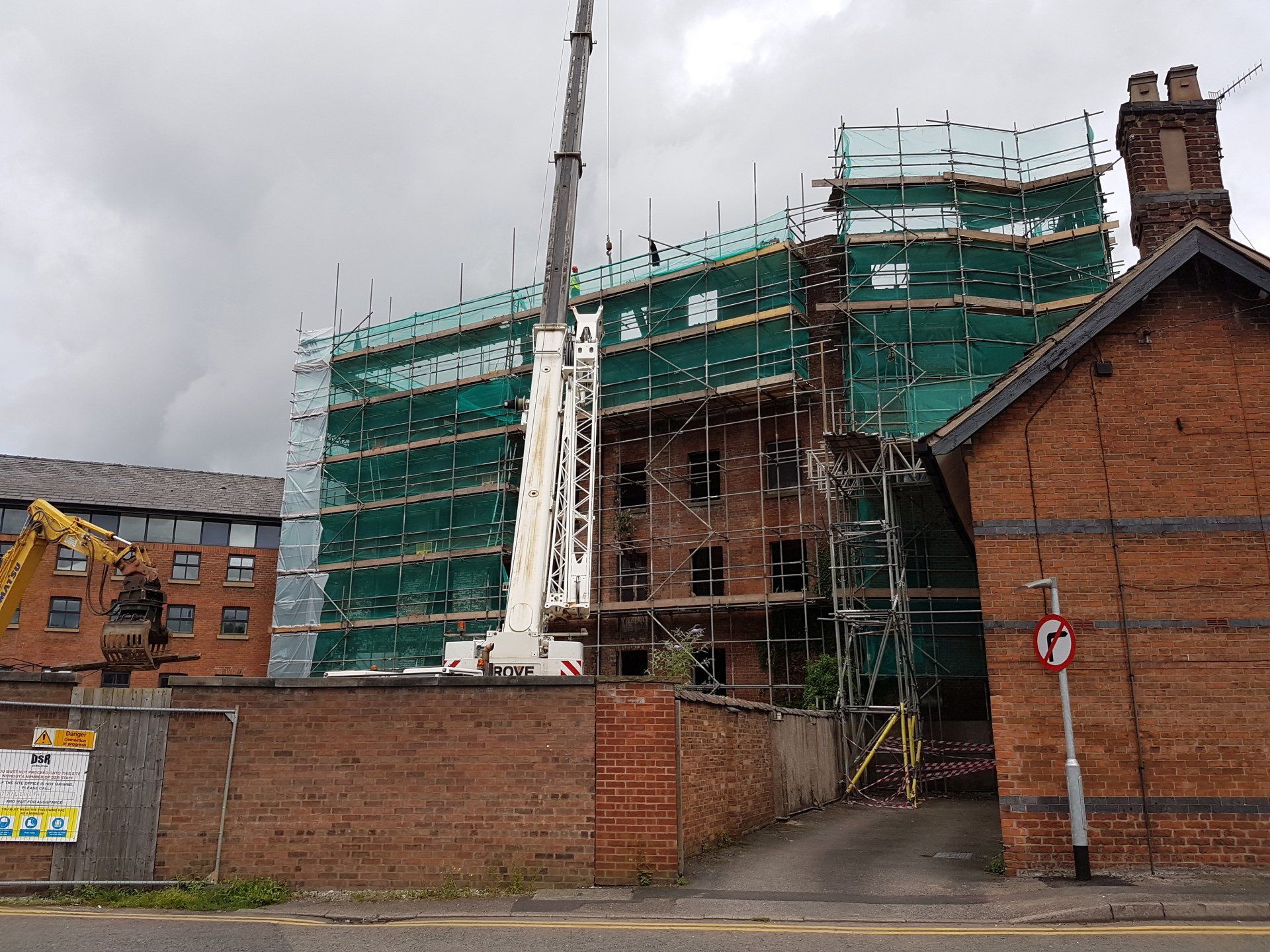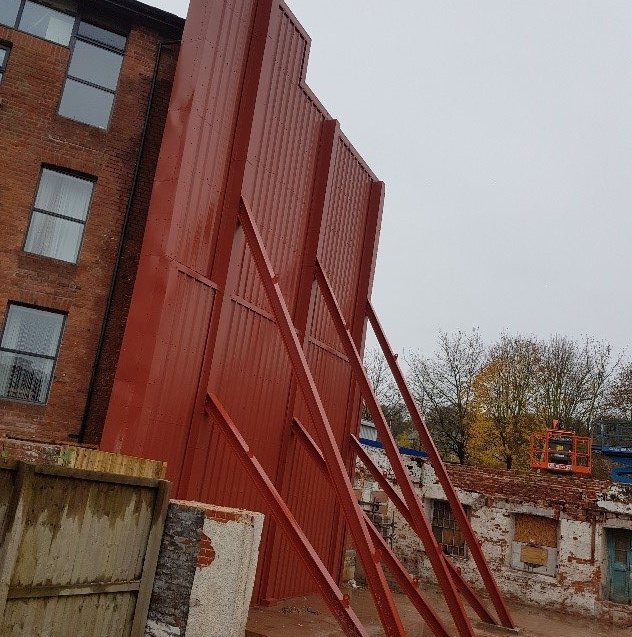Case Study
Dismantling of Grade II Listed Bosson's Mill
DSR Demolition's largest contract with Cheshire East Council was to to remove a dangerous mill structure in the centre of Congleton.
The works took place under a Section 78 emergency notice whose aim is to remove the danger to the public.
The building was Grade II listed and was connected to Little Mill, where there are 16 inhabited apartments and consequently neighbour and stakeholder interests were high because of complex party wall issues.
We erected a comprehensive fully designed scaffolding system to protect Little Mill, a funeral director business, and the Howty Brook which feeds the River Dane.
Read on for further information below.
£450k
Contract value
2016
Contract date
Section 78
Emergency works
Grade II
Listed structure
The project involved constant liaison with the adjoining neighbours, our scaffolding team, the council’s building control department, environmental health department and heritage department, as well as the highways department, Environment Agency and the HSE.
The dilapidated condition of the building was identified by the council’s structural engineer, who condemned it as at risk of imminent collapse. The poor condition of the floors inside also meant that a fully intrusive asbestos refurbishment and demolition survey was not possible. To remedy this, asbestos consultants were engaged to provide regular background and personal monitoring and to take samples of any suspect items. On confirmation of positive samples, our licensed asbestos contractor was ready to remove the items under controlled conditions.
The scaffolding system surrounded the building and incorporated cantilevered sections over Little Mill and Garside’s funeral directors. We also had a protection system designed for the adjacent Howty Brook, including a filtration section comprising hay bales and metals grids to filter any dust and prevent the spread of contamination. This was agreed with the Environment Agency, with whom we liaised throughout the works. The protection system was successful in preventing lime deposits from affecting marine life downstream, which the EA confirmed with regular testing.
From the beginning of the project, we liaised with the HSE to agree the most suitable method of demolition and associated control measures. We had our own demolition specialist structural engineer on the team to advise on the hand-dismantling methodologies and the sequencing of the works. We provided information to the council nearly constantly for the duration of the works, including fortnightly progress reports and meetings, where we presented our up to date risk assessments and method statements as part of a continual reassessment of the hazards of the projects.
The dismantling procedure involved a careful lifting plan to transport small boat skips of brick rubble down to ground level, and also to sling structural beams. A man basket was also in use to afford better access to the centre of the structure where scaffolding access was not possible.
As part of the dismantling process, we endeavoured to salvage items of historical interest and to reclaim as much material as possible as the building is Grade II listed. Brickwork, cast iron columns, gantry crane equipment, window frames and a lead rainwater hopper, a section of a curved brickwork privy chute and some stone lintels were salvaged safely.
The building was de-bricked by operatives, assisted by the crane which lifted down larger items such as a historic gantry crane, and large wooden beams and trusses. When the building was deemed to be at a suitable height by the structural engineer, the excavator arrived to speed up the final part of the demolition works to make the site safe in line with the Section 78 notice.
On completion of the demolition of the majority of the structure, we undertook ground strengthening work to enable safe installation of weather and structural protection to the newly exposed gable wall of Little Mill apartments.


